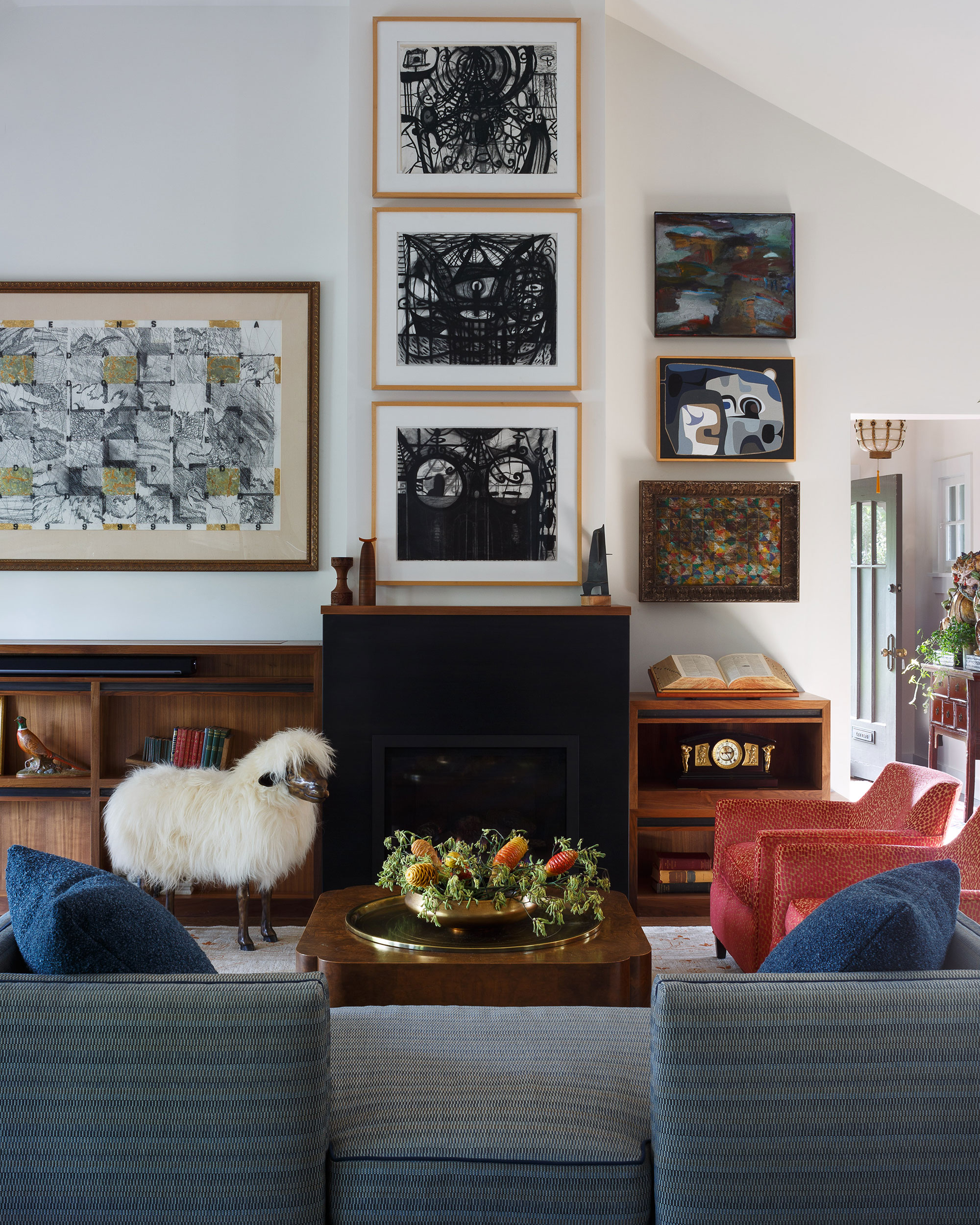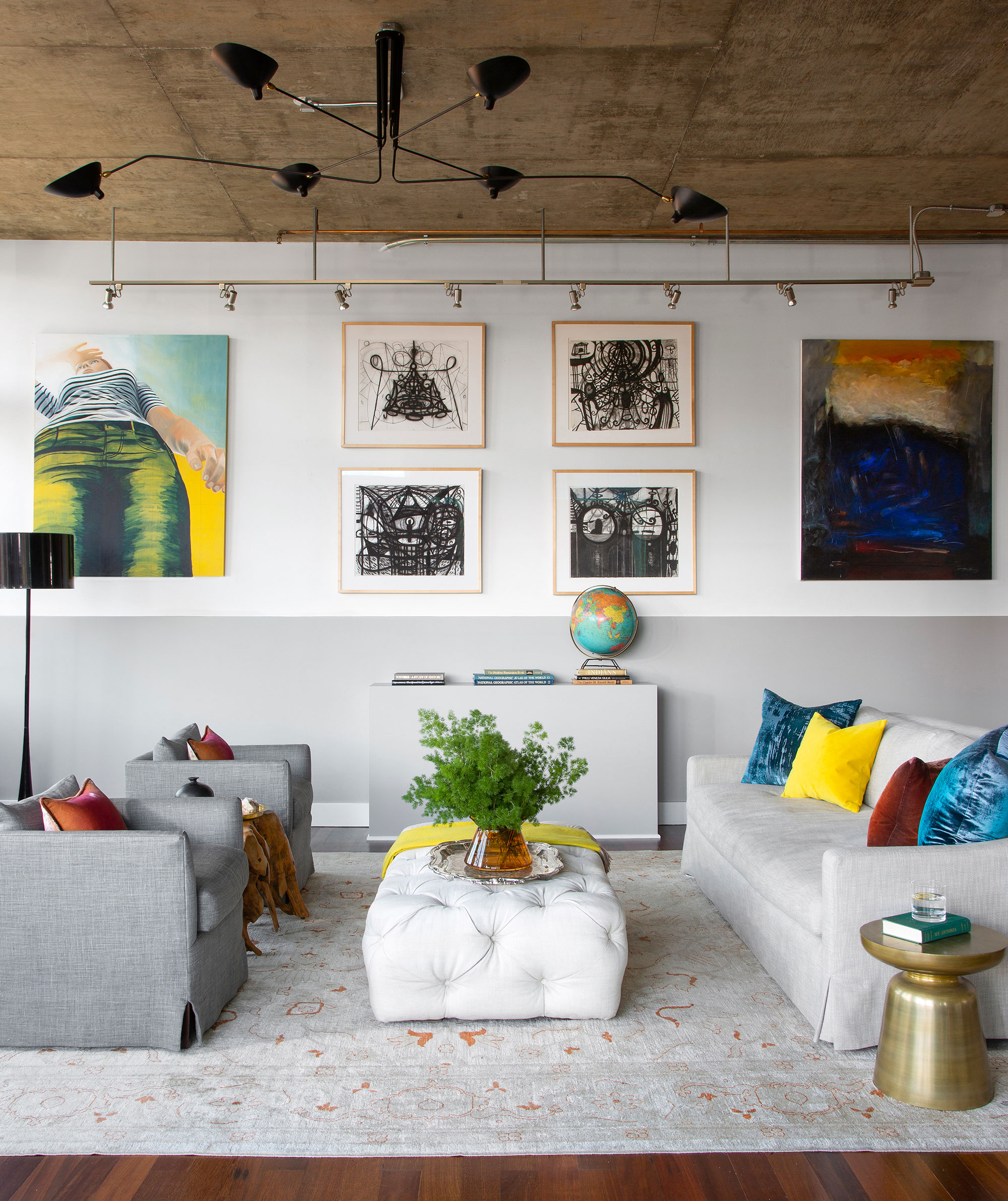
Everything You Wanted to Know About Building a Gallery Wall—But Were Too Embarrassed to Ask
Your guide to a picture-perfect setup.

Emily Minton Redfield
Some people say a picture’s worth one thousand words, but a gallery wall full of photos can tell the unique, dynamic story of your life. “They bring life and energy to a space,” explains Denver-based designer Nadia Watts. “People naturally gravitate toward gallery walls, often sparking conversations about the art. It’s a way to share your experiences, interests, and creativity with guests.”
A collection of artwork, personal mementos, and Kodak moments might look picture-perfect in a home tour or on an influencer’s social media feed, but bringing the look into your home? Now that’s easier said than done. While gallery walls are supposed to have an effortless, thrown-together vibe, it does take a little bit of strategy to create a setup that feels both balanced and beautiful. Truth is, the whole thing can be so intimidating that you might’ve sworn off gallery walls altogether.
Well, not so fast. We’ve asked two interior designers to pull back the curtain on the mystery behind this trend so you can confidently create a gallery wall that will render everyone speechless.

Emily Minton Redfield
How Do You Create a Gallery Wall?
When it comes to a gallery wall, good things come to those who plan. Watts recommends laying out your group of frames on the floor, so you can easily move things around as you see fit. To start, select a center frame that will anchor your gallery wall: A large-scale piece of art or a cherished family photo are two excellent options. For a balance layout, Watts recommends positioning your central frame about 60 inches from the ground.
“I always recommend beginning with a centerpiece that you expand off of, going up and down, and then left and right, and repeating up and down again,” Watts says. “This way, a balance is created as you work out from the center.”
While using frames of the same size (and shape!) will create a very sleek, museum-like quality, Molly Carter of Molly Erin Designs prefers “a more organic look” that mixes multiple sizes of art, objects, and different orientations. The key, she says, is to create some negative space. “If you use pieces that are all different sizes and colors, I find that keeping the spacing similar will help the eye not feel cluttered,” the California-based designer explains. “For example, you can keep frames two inches apart on all sides.”

Courtesy of Molly Erin Designs
What’s the Perfect Mix of Proportions?
Though experimenting with proportions is a surefire way to pack your gallery wall with lots of personality, the mix of larger and smaller pieces is pretty subjective. After all, beauty lies in the eye of the beholder. Rather, think of your gallery wall as a home decor puzzle. “Use blue tape to create the boundaries of how large you want to go,” Carter says. “Then start placing larger pieces first and mixing in smaller ones.”
But when it comes to large-scale art, how big is too big? Follow the two-thirds rule. If you’re adding a gallery wall near furniture like a couch or console table, select frames that are up to two-thirds the size near its width. That way, you’ll have artwork and photos that make a statement without overwhelming the room.

Courtesy of Molly Erin Designs
Should You Match Your Frames?
Since a gallery wall should be a reflection of your style, it really depends on personal preference. While Watts says that while matching frames works when you’re displaying family photos or drawings, a variety of different styles can offer some visual intrigue. That said, mixing and matching frames does require a bit of strategy.
“I’m a huge fan of having all different frames in my gallery walls, but just be sure to coordinate finishes,” Carter shares. “The frames should make each piece of art stand out on their own.” Watts agrees and adds, “I focus on the art to balance the gallery wall; I am not focused on the specific frames.”

Emily Minton Redfield
What Should You Even Add to a Gallery Wall?
We’re going to let you in on a little secret: A gallery wall doesn’t have to be limited to framed photographs. If designers are being honest, a little bit of variety is the secret to an awe-inspiring arrangement. “It’s best to mix different shapes, sizes, and textures,” Watts says. “You can even include woven baskets, architectural elements, and vintage pieces.”
While photographs are still fair game for a gallery wall, Carter encourages you to think outside of the box. “Source original art or photography,” she says. “Take your time to find special pieces that mean something to you.”
